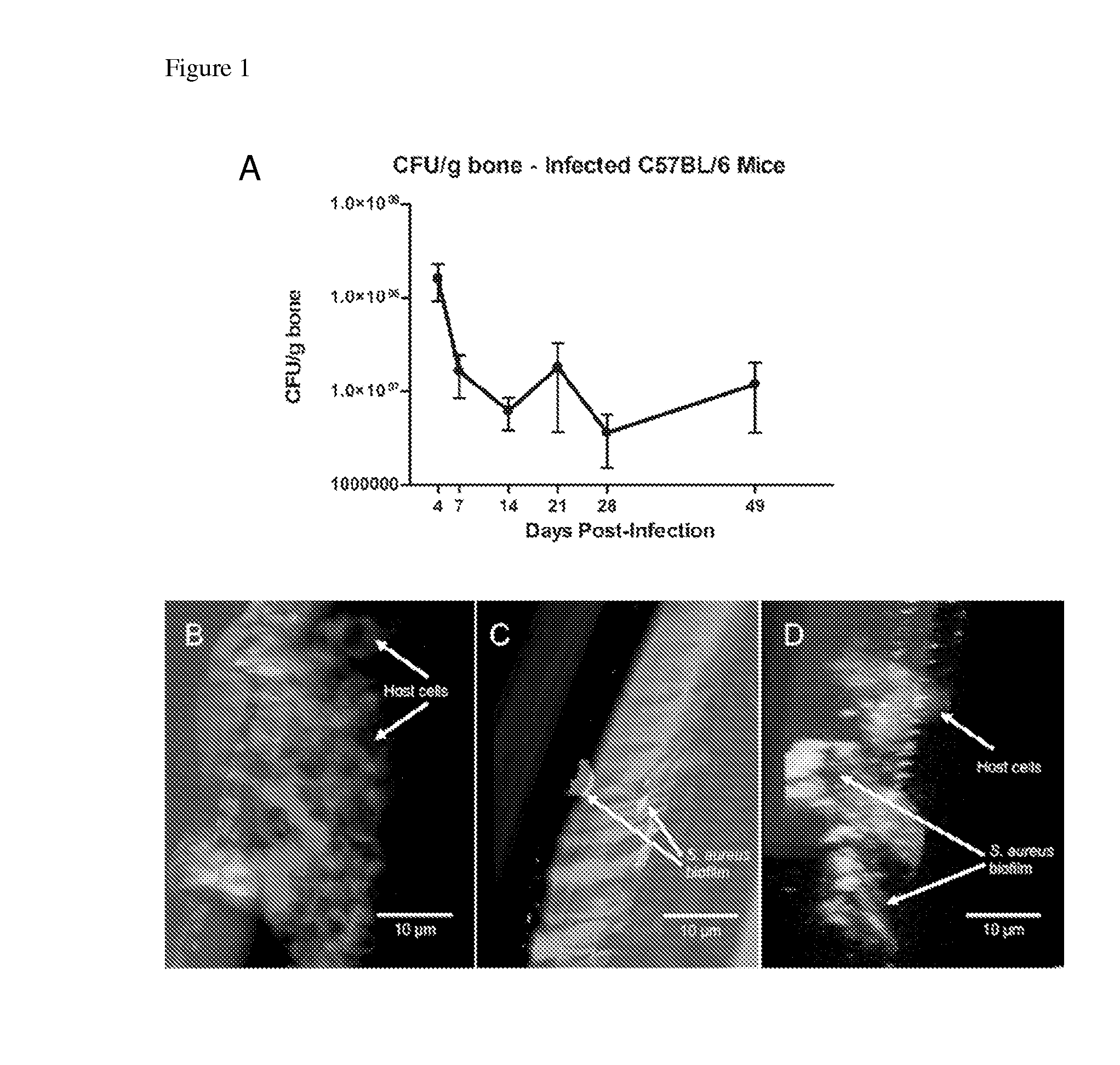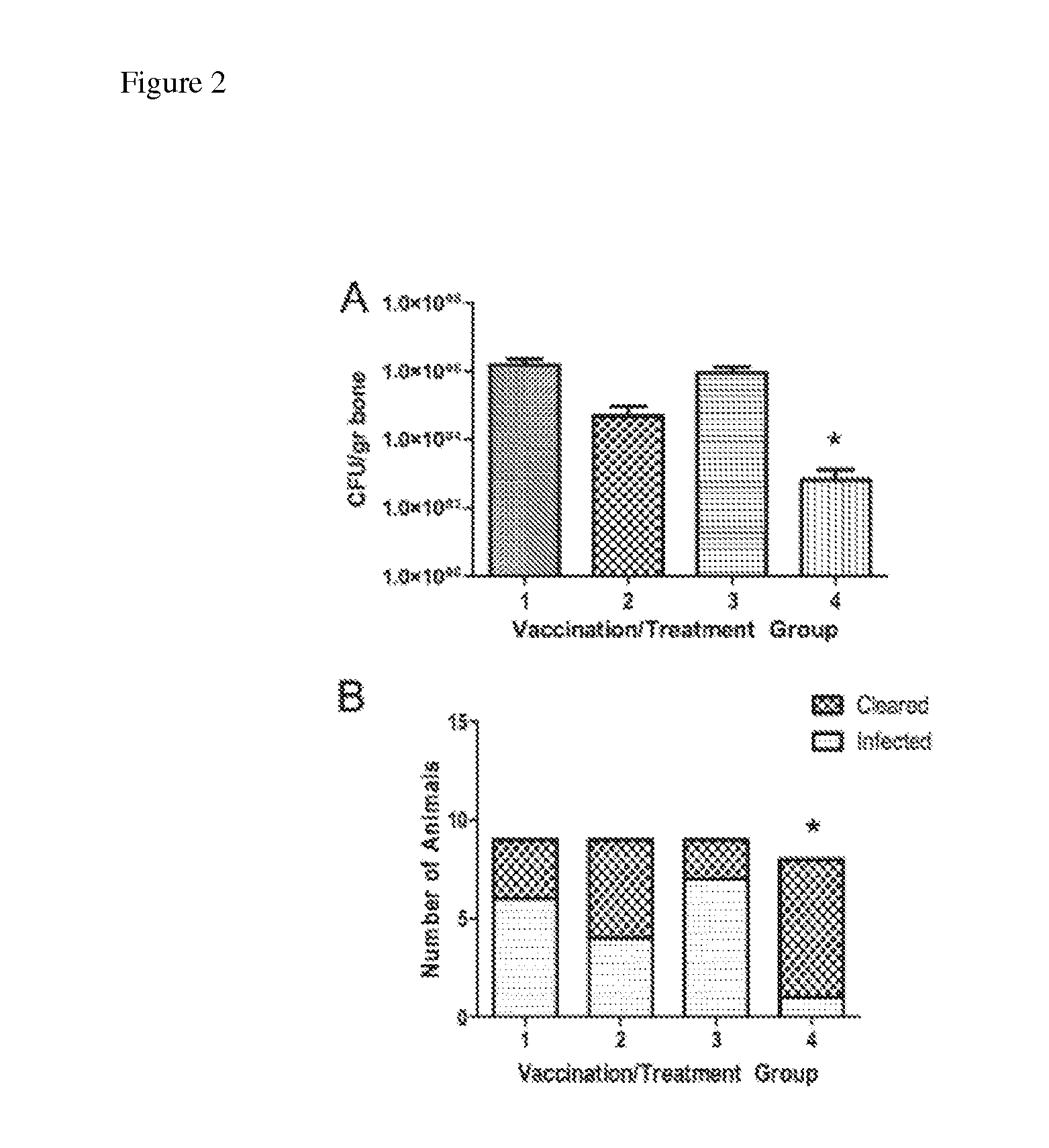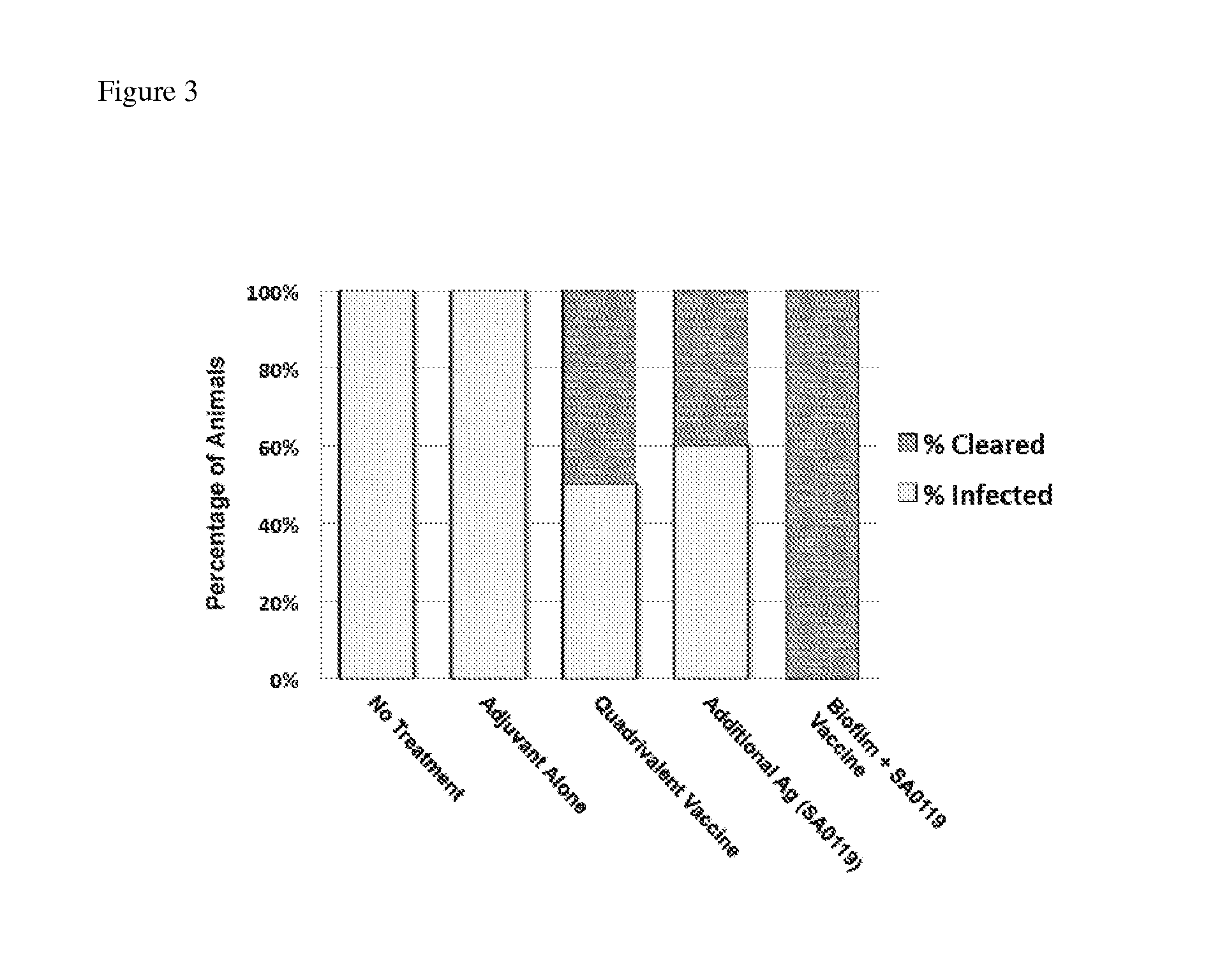Multivalent vaccine protection from staphylococcus aureus infection
a technology of staphylococcus aureus and vaccine formulation, which is applied in the direction of antibacterial agents, antibody medical ingredients, immunological disorders, etc., can solve the problems of difficult eradication of this bacteria, lack of antigen conservation among relevant clinical isolates, and complicated process for treating prosthetic implant infections. achieve the effect of saving patients from significant morbidity and mortality and preventing the onset of chronic diseas
- Summary
- Abstract
- Description
- Claims
- Application Information
AI Technical Summary
Benefits of technology
Problems solved by technology
Method used
Image
Examples
examples
Materials and Methods
[0065]Unless stated otherwise, the following experimental details pertain to each of the examples provided in the specific Examples set forth and discussed below.
[0066]Mice.
[0067]Inbred C57BL / 6 (6-8 weeks old) were purchased from Jackson Laboratories (Bar Harbor, Me.). Mice were maintained under micro-isolator conditions in the animal facility at the University of Maryland Dental School (Baltimore, Md.), in accordance with protocols reviewed and approved by the Institutional Animal Care and Use Committee (IACUC).
[0068]Bacterial Strain and Preparation of Infectious Inocula.
[0069]The strain of S. aureus used in these experiments, MRSA-M2, is a clinical isolate obtained from an osteomyelitis patient undergoing treatment at the University of Texas Medical Branch (Galveston, Tex.) and has been used in previous biofilm molecular analyses and animal infection models (5, 34, 37, 60) (6, 47, 49, 50). An overnight S. aureus Tryptic Soy Broth (TSB) culture grown at 37° C. ...
PUM
| Property | Measurement | Unit |
|---|---|---|
| time | aaaaa | aaaaa |
| time | aaaaa | aaaaa |
| time | aaaaa | aaaaa |
Abstract
Description
Claims
Application Information
 Login to View More
Login to View More - R&D
- Intellectual Property
- Life Sciences
- Materials
- Tech Scout
- Unparalleled Data Quality
- Higher Quality Content
- 60% Fewer Hallucinations
Browse by: Latest US Patents, China's latest patents, Technical Efficacy Thesaurus, Application Domain, Technology Topic, Popular Technical Reports.
© 2025 PatSnap. All rights reserved.Legal|Privacy policy|Modern Slavery Act Transparency Statement|Sitemap|About US| Contact US: help@patsnap.com



